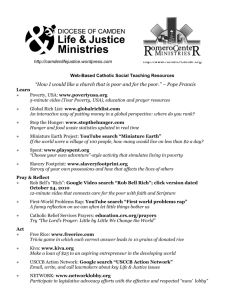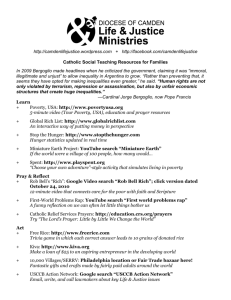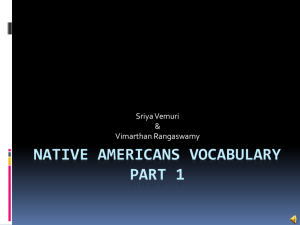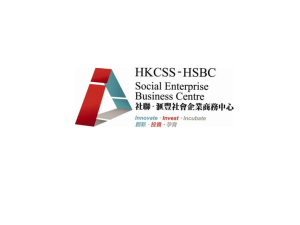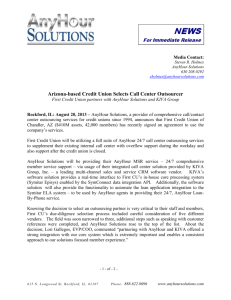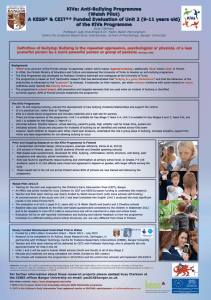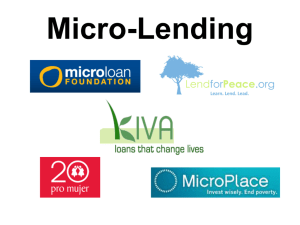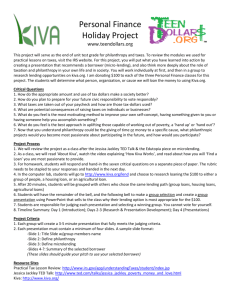File
advertisement
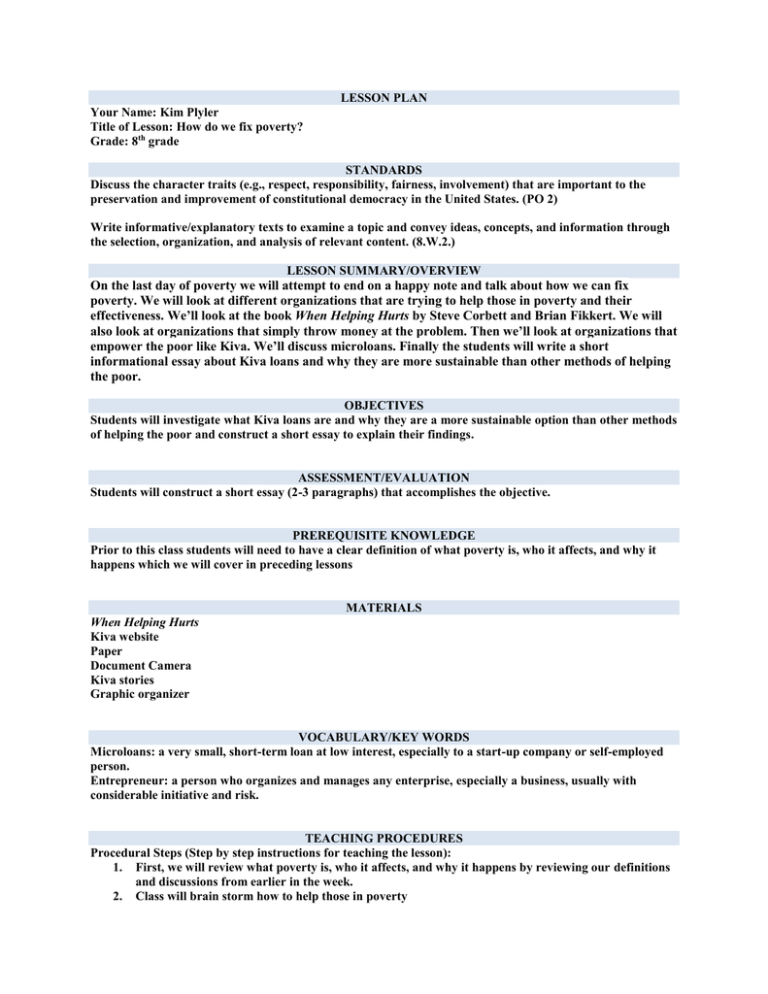
LESSON PLAN Your Name: Kim Plyler Title of Lesson: How do we fix poverty? Grade: 8th grade STANDARDS Discuss the character traits (e.g., respect, responsibility, fairness, involvement) that are important to the preservation and improvement of constitutional democracy in the United States. (PO 2) Write informative/explanatory texts to examine a topic and convey ideas, concepts, and information through the selection, organization, and analysis of relevant content. (8.W.2.) LESSON SUMMARY/OVERVIEW On the last day of poverty we will attempt to end on a happy note and talk about how we can fix poverty. We will look at different organizations that are trying to help those in poverty and their effectiveness. We’ll look at the book When Helping Hurts by Steve Corbett and Brian Fikkert. We will also look at organizations that simply throw money at the problem. Then we’ll look at organizations that empower the poor like Kiva. We’ll discuss microloans. Finally the students will write a short informational essay about Kiva loans and why they are more sustainable than other methods of helping the poor. OBJECTIVES Students will investigate what Kiva loans are and why they are a more sustainable option than other methods of helping the poor and construct a short essay to explain their findings. ASSESSMENT/EVALUATION Students will construct a short essay (2-3 paragraphs) that accomplishes the objective. PREREQUISITE KNOWLEDGE Prior to this class students will need to have a clear definition of what poverty is, who it affects, and why it happens which we will cover in preceding lessons MATERIALS When Helping Hurts Kiva website Paper Document Camera Kiva stories Graphic organizer VOCABULARY/KEY WORDS Microloans: a very small, short-term loan at low interest, especially to a start-up company or self-employed person. Entrepreneur: a person who organizes and manages any enterprise, especially a business, usually with considerable initiative and risk. TEACHING PROCEDURES Procedural Steps (Step by step instructions for teaching the lesson): 1. First, we will review what poverty is, who it affects, and why it happens by reviewing our definitions and discussions from earlier in the week. 2. Class will brain storm how to help those in poverty a. 3. 4. 5. 6. Students will pull from things that they’ve heard in the news, things they may do for the poor or things that we have talked about this week in regards to poverty. Teacher will also give some ideas if students are having trouble. (ex. Food banks, Salvation Army, Red Cross, Samaritan’s Purse, ect) Class will categorize ideas into sustainable and unstainable ideas in the attached graphic organizer. From the book, When Helping Hurts, teacher will read marked passages and explain how some organizations simply throw money at poverty without actually fixing the problem and discuss how that is an unstainable way of helping Teacher will introduce Kiva and microloans if it was not brought up and discuss it further if it was mentioned. We will look at the Kiva website. We will also look at stories of people who Kiva has helped one of which students will choose for their short essay. Once students understand what Kiva is and what they do they will answer the following prompt in 23 paragraphs. Prompt: Choose a Kiva story. Tell generally what Kiva is, who the story is about, what Kiva did for them, and what systems Kiva affects in this particular situation. Then write one paragraph telling if you think Kiva is sustainable help for the issue of poverty and why or why not. RESOURCES Dictionary.com Kiva.org When Helping Hurts WAYS OF THINKING CONNECTION Students will look at different ways to help alleviate poverty in the world. They will look at both sustainably and unstainable ways of helping. The student will then write about one of the more sustainable ways. This will connect to systems thinking. Throughout the week the students will be considering what systems are affected when people are in poverty. On day one and two they will be writing about what systems are affected. On day five the students will write about how systems will be affected through the sustainable way of helping. Sustainable Unsustainable
